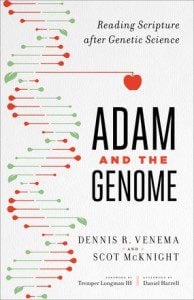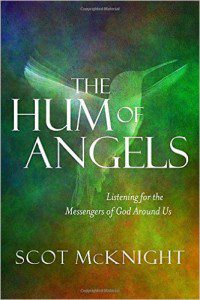Hitchin’ a ride
See that red-winged blackbird atop the eagle?
It’s been a light week in the blog world … many of my regular reads just didn’t post this week. So, here’s what I’ve got, and the next few weeks will be light when it comes to links to blogs.
Jim Martin’s two-part series on what he’s learned after 19 years at the same church. Part one, Part two.
Adam at iMonk … must read.
Saturday morning reminds of the need to work on relaxing and reducing stress: “A recent survey by psychologist and self-help author Robert Epstein found that 25% of our happiness hinges on how well we’re able to manage stress. The next logical question is, of course, how best can we reduce our stress?”
 Allan’s comment on Rabbi Yoffie’s honesty about inter-faith dialogue: “The good rabbi’s comments resonate with me. I have argued for years that the major problem with most inter-religious dialogue is that because its participants are hyper-sensitive over offending the persons sitting across the table, they fail to engage in the rigorous intellectual work necessary for fruitful discussion and understanding between people of different faiths. At other times, the rigorous intellectual work is not engaged in because some participants have come to believe that what one believes is irrelevant; what is of critical importance is what one does. Orthodoxy is separated from orthopraxy and thus both are distorted and misunderstood.” Roger Olson — I agree with this: “I have come to hold the opinion that America’s conservative over reaction is to the cultural revolutions of the 1960s. What happened in the churches and society, including national government, frightened people so much that they rushed headlong over the next few decades into what would have been considered extremist religious and political views in the 1950s. When I listen to mainstream (mostly) Republican politicians I am reminded of my John Birch Society boss and when I listen to conservative evangelical leaders I’m reminded of Jerry Falwell and the fundamentalists who reviled evangelicals in the 1950s as compromisers of the gospel.”
Allan’s comment on Rabbi Yoffie’s honesty about inter-faith dialogue: “The good rabbi’s comments resonate with me. I have argued for years that the major problem with most inter-religious dialogue is that because its participants are hyper-sensitive over offending the persons sitting across the table, they fail to engage in the rigorous intellectual work necessary for fruitful discussion and understanding between people of different faiths. At other times, the rigorous intellectual work is not engaged in because some participants have come to believe that what one believes is irrelevant; what is of critical importance is what one does. Orthodoxy is separated from orthopraxy and thus both are distorted and misunderstood.” Roger Olson — I agree with this: “I have come to hold the opinion that America’s conservative over reaction is to the cultural revolutions of the 1960s. What happened in the churches and society, including national government, frightened people so much that they rushed headlong over the next few decades into what would have been considered extremist religious and political views in the 1950s. When I listen to mainstream (mostly) Republican politicians I am reminded of my John Birch Society boss and when I listen to conservative evangelical leaders I’m reminded of Jerry Falwell and the fundamentalists who reviled evangelicals in the 1950s as compromisers of the gospel.”
Choices. Brett on how to watch a Malick film.
Meanderings in the News
1. Is there bias against evangelicals in the academy? Thomas Trevethan: “The shape of Compromising Scholarship marks out the shape of Professor Yancey’s argument. He introduces the topic of his investigation, the shape of his book, the history of investigations about bias in the academy, and himself in the first two chapters. In this introduction his own social characteristics, location, and potential bias is canvassed. Yancey is an African-American, self-confessed evangelical Christian, a political independent, a son of the South from a home of lower socio-economic stature. And he notes how this identity affords both advantages and disadvantages as he undertakes this investigation. In the interests of similar candor your reviewer should also note that George Yancey is a good friend of InterVarsity Faculty Ministry and especially of the Emerging Scholars Network, as well as an author published by InterVarsity Press.”
2. A test: “In November 2009, Robert Dixon took a test to determine whether he was a psychopath. After 26 years in prison, he was due for a parole hearing. In California, before a “lifer” like Dixon appears before the parole board, a state psychologist must first evaluate whether he poses a risk of further violence if released. To do that, the psychologist administers a test — the PCL-R, or Psychopathy Checklist-Revised — designed to measure whether that inmate is a psychopath. This test has incredible power in the American criminal justice system. It’s used to make decisions such as what kind of sentence a criminal gets and whether an inmate is released on parole. It has even been used to help decide whether someone should be put to death.”
 3. Elvis on fatty foods: “In 1992, the U.S. Postal Service asked the nation to vote by postcard on whether the new Elvis Presley stamp should depict Elvis as a young man — slickly pompadoured, tie loose, cool as a diner malt — or as the jonesing, sequined lard-ass he later became. The decision wasn’t a hard one: Voters overwhelmingly chose the young Elvis, preferring to remember their idol in the days when he put Crisco in his hair rather than into his face. Memories of Presley’s shape late in life remain painful for some fans, who prefer the image of a lithe young star with a pelvis so provocative that, even fully clothed, it could not be shown on television. But Elvis morphed into something much worse, burying himself in his own pudge, until on Aug. 16, 1977, his heart decided it could no longer work under those conditions and left the King dead on his bathroom floor. By age 42, Elvis had long been gobbling drugs and fatty foods. But his romance with saturated fat reached a sort of point-of-no-return 18 months before the end, on a chilly night that started at Graceland, his estate in Memphis, Tenn. On Groundhog Day in 1976, Elvis’s guests at Graceland included two Denver cops, Jerry Kennedy and Ron Pietrafeso, who had served as bodyguards for him during a ski trip in Vail, Colo., two weeks earlier. As gratuities, Elvis gave Kennedy a Lincoln Mark IV and Pietrafeso a Cadillac. (Elvis’s relations with law enforcement were unremittingly strange. He wore and owned a Denver police uniform. And once he showed up unannounced at the White House and asked to be made a federal agent. Richard Nixon posed for a photo and — without apparent irony — badged him into the Bureau of Narcotics and Dangerous Drugs.)”
3. Elvis on fatty foods: “In 1992, the U.S. Postal Service asked the nation to vote by postcard on whether the new Elvis Presley stamp should depict Elvis as a young man — slickly pompadoured, tie loose, cool as a diner malt — or as the jonesing, sequined lard-ass he later became. The decision wasn’t a hard one: Voters overwhelmingly chose the young Elvis, preferring to remember their idol in the days when he put Crisco in his hair rather than into his face. Memories of Presley’s shape late in life remain painful for some fans, who prefer the image of a lithe young star with a pelvis so provocative that, even fully clothed, it could not be shown on television. But Elvis morphed into something much worse, burying himself in his own pudge, until on Aug. 16, 1977, his heart decided it could no longer work under those conditions and left the King dead on his bathroom floor. By age 42, Elvis had long been gobbling drugs and fatty foods. But his romance with saturated fat reached a sort of point-of-no-return 18 months before the end, on a chilly night that started at Graceland, his estate in Memphis, Tenn. On Groundhog Day in 1976, Elvis’s guests at Graceland included two Denver cops, Jerry Kennedy and Ron Pietrafeso, who had served as bodyguards for him during a ski trip in Vail, Colo., two weeks earlier. As gratuities, Elvis gave Kennedy a Lincoln Mark IV and Pietrafeso a Cadillac. (Elvis’s relations with law enforcement were unremittingly strange. He wore and owned a Denver police uniform. And once he showed up unannounced at the White House and asked to be made a federal agent. Richard Nixon posed for a photo and — without apparent irony — badged him into the Bureau of Narcotics and Dangerous Drugs.)”
4. Jonathan Franzen: “And, since our technology is really just an extension of ourselves, we don’t have to have contempt for its manipulability in the way we might with actual people. It’s all one big endless loop. We like the mirror and the mirror likes us. To friend a person is merely to include the person in our private hall of flattering mirrors. I may be overstating the case, a little bit. Very probably, you’re sick to death of hearing social media disrespected by cranky 51-year-olds. My aim here is mainly to set up a contrast between the narcissistic tendencies of technology and the problem of actual love. My friend Alice Sebold likes to talk about “getting down in the pit and loving somebody.” She has in mind the dirt that love inevitably splatters on the mirror of our self-regard.”
5. Annie Lowrey: “This week, researchers at Umea University in Sweden released a startling finding: Couples in which one partner commutes for longer than 45 minutes are 40 percent likelier to divorce. The Swedes could not say why. Perhaps long-distance commuters tend to be poorer or less educated, both conditions that make divorce more common. Perhaps long transit times exacerbate corrosive marital inequalities, with one partner overburdened by child care and the other overburdened by work. But perhaps the Swedes are just telling us something we all already know, which is that commuting is bad for you. Awful, in fact.”
6. This one is scary and irritating:
7. Rick Warren, John Piper and Warren’s popularity in Latin America: “Rick Warren and his mega-bestseller The Purpose Driven Life are back in the spotlight and under scrutiny, following the release of a recent interview with Pastor John Piper. Warren was given the opportunity clarify and articulate his theological views after years of enduring criticisms from largely Reformed Christians over biblical doctrines. He was criticized, for example, for leaving out the term repentance in the prayer he wrote for nonbelievers to pray in his book. (Warren affirmed repentance as central to the Gospel in the interview.) But despite the criticism, the Saddleback Church pastor has influenced millions around the world with his “Purpose Driven” books. He is also known for his simple way of communicating and reaching out to different types of individuals, churches and nations.”
8. Edublogs and academic bloggers, wow.
9. James L. Jones, Kevin Schmiegel: “This Memorial Day, roughly 1 million veterans will be looking for jobs. The unemployment rate for post-9/11 veterans was well above the national average last year, at 11.5%, and more than a quarter of the veterans between the ages of 18 to 24 are without work.”
10. A Mormon church for singles — 800 of them! “It’s Tuesday night Bible study, which at this Crystal City Mormon chapel looks a bit like a mixer. Pews are filled with people in jeans and flip-flops, many texting. The night begins with a prayer before segueing quickly into an ice-breaker trivia game and a pizza social. Not surprising for a church made up exclusively of singles — 800 of them. The newly opened “23rd Street chapel” is unique in the American Mormon church: It is the only worship space in the country devoted solely to unmarried people in their 20s, 30s and 40s. It serves the biggest population of single Mormons outside Utah in a neighborhood so thick with church members that it is nicknamed “Little Provo.”
Meanderings in Sports













